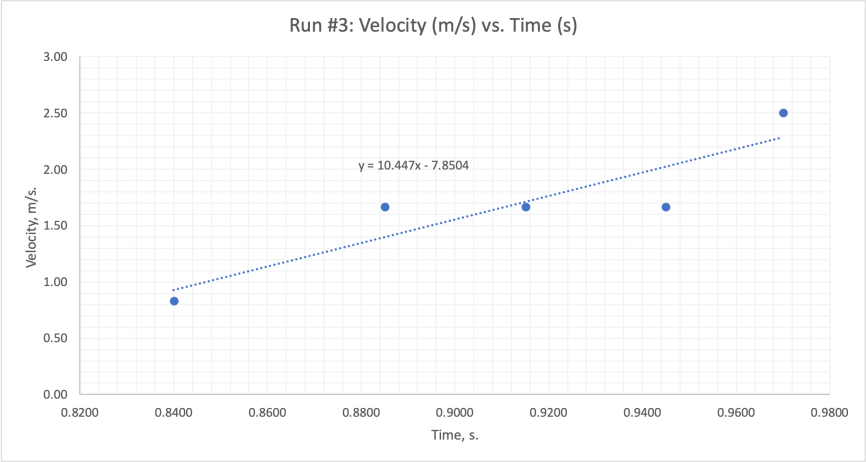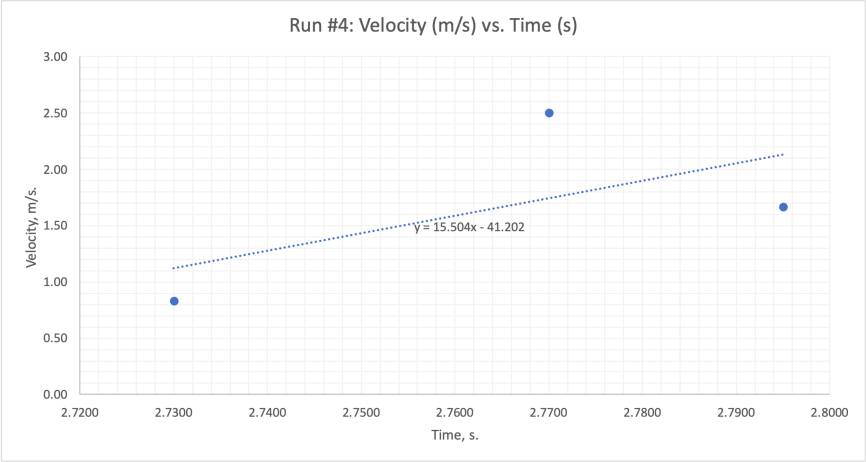Introduction
The purpose of this work is to study the relationship between the velocity of a falling object and the time during which it falls. For this purpose, we use an installation with a picket fence, which automatically fixes the values of time when the falling object strictly vertically reaches the black areas in the background. The lab work will determine precisely how the velocity of free fall is related to time and how it is related to acceleration.
Analysis
Four runs were conducted, with several points determined for each run. Table 1 below shows the different times (in seconds) for which the object fell and also reports information about the specific position (in meters) for which this time was measured, indicating the uncertainty of the direct measurements.
Table 1. Data from the measurement.
For these data, the average values of time between points, as well as the values of instantaneous velocity at this time, were calculated according to the formulas given in the instructions for the laboratory work. Table 2 shows the calculated values of average times and instantaneous velocities. Since the formulas implied pairwise comparisons, the number of points for each run was naturally reduced.
Table 2. Calculations of instantaneous velocities and the times at which these velocities were reached.
The results allow us to study the nature of the relationship between the free-fall velocity for each launch and the time during which the object made the fall. For this purpose, velocity-time plots were plotted, as shown in Figures 1–4. For each data set, the trends were ascending, which implies that with a positive time course, the free-fall velocity increased in a consistent manner. Linearity was confirmed for all regressions, even though the R2 coefficients, which determine model reliability, were different.




Particular attention should be paid to the slope and y-intercept in the constructed models. The value of the inclination determines the derivative of the velocity over time, that is, it is actually equal to the acceleration. Since no forces other than gravity affected the falling objects, this acceleration must have been numerically equal to the acceleration of free fall. The specific values calculated ranged from 6.6 to 15.50 m/s2, with an average value of 10.9916 m/s2. It is noteworthy that the theoretical value of the free fall acceleration is 9.82 m/s2, which gives an absolute percentage error of 11.9% (Strobel, 2022). In addition, the y-intercept determined the velocity of the object’s fall at zero time, that is, when the motion had not yet been determined. Unlike tilt, this value made no physical sense since velocity does not exist at rest, much less negative velocity.
Conclusion
A linear relationship was found between free-fall velocity and time. Four regression models were built for each of the launches, and values of free-fall accelerations were determined. Compared to the theoretical value of g, the average calculated acceleration had an absolute error of 11.9%. The cause of the errors could be measurement uncertainties, leading to ambiguities in the results, as well as instrumental errors.
Reference
Strobel, N. (2022). Gravitational acceleration[PDF document].